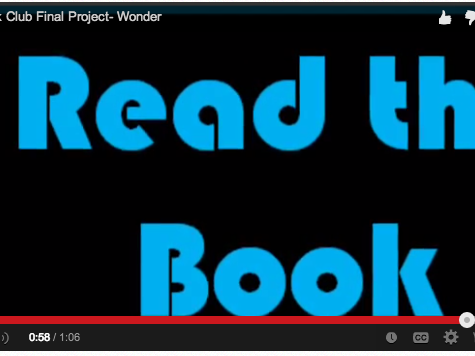This post first appeared on Edudemic.
A class set of novels, binders, poster boards, and enough post-it notes to wallpaper a school…. all supplies associated with a traditional middle school book club model. With the addition of iPads, Google Apps, and other educational technology, the age of the “traditional” book club requires a change.
Digital book clubs allow for connected, flexible, and customized literacy instruction that engages all learners. From reading digital novels, to participating in online discussions, and annotating text with categorical tags to expressing ideas through transliteracy (multi-media tools), students will interact with the text, the teacher, and each other while receiving nearly instant, trackable feedback on their work. You can use technology to reinforce effective comprehension strategies while upgrading the literary climate of your classroom by following these 5 steps to revolutionize your classroom book clubs.
1. Guidelines and Best Practices
Before launching your student-led book clubs, you’ll need to establish a structure: meeting guidelines, assessment practices, behavior expectations, and upcoming assignments. Build a website, using a platform such as WordPress or Google Sites, to serve as your information delivery method. Students can access updated book club procedures from any device and can then use the site as a resource when running their clubs.
2. Book Selection
It’s our goal to help kids realize that they love to read. Motivate your students to complete the independent reading necessary for successful book clubs by introducing them to “real-world” sites for reading enthusiasts: Common Sense Media and Goodreads. Here they can search by genre, plot line, author, AND you can check for age-appropriate content before getting them hooked on their book club novel.
Image Source: Common Sense Media
3. Assessment and Monitoring
Working as a facilitator, you can truly observe your students interaction with each other and their texts. Invite yourself to your students’ meetings to jump in on the conversation, but also to collect formative assessment data. Filling out a quick Google Form will help you track your students in terms of preparedness, meaningful participation, written analysis, and respectful “team” behavior. It will also prepare you to provide quick and meaningful feedback that will help students succeed as readers.
Image: Google Form Checklist
4. Collaboration and Communication
Here lies the foundation of your student-led book clubs: communication and collaboration. Using the web-service, Subtext (also Edmodo or WeJIT), students can read a digital copy of their book and show their thinking with highlighting, commenting, word identification, and annotation tools. What’s more, once you create “groups” for your book clubs in Subtext, your students can see each other’s comments (yours as well) and add to the threads. Use Subtext to leave open ended or multiple choice questions, polls, and to track each individual student’s progress in pages and in comments.
5. Publishing and Response
Process is important in all learning, and so is giving students an opportunity to demonstrate what they’ve learned. As book clubs are wrapping up, use iMovie to turn your students’ book responses into a movie trailer. Want to take it a step further? Use Book Creator to compile all of their work, including the iMovie, into a digital book of their own. In either case, students will use technology to highlight the key components of their books: characters, theme, conflict, message…while presenting their work to an authentic, online audience. Who knows? Maybe your students’ trailers will inspire other students to pick up a book and read!
http://youtu.be/ExavirHw15A
Extra Step: Graphic Organizers and Notes
Even though your students will take the lead during book clubs, some teams may require a little assistance to reach their collaborative potential. Use Notability and Google Drive to provide students with structure, guiding questions, and performance tasks by using graphic organizers. Help them analyze characters, theme, and conflict without removing student leadership.
Corey Holm and Jamie Trow will be presenting DigiLit: Book Clubs for a 21st Century Classroom at the July 28-30 EdTechTeacher Summit in Chicago. Registration is still open!


